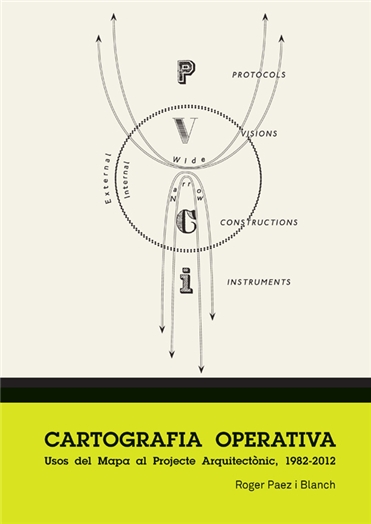We live in a complex world. For some time, the great certainties and the narratives they support have been shown to be inadequate as an entryway into the richness of the contemporary world. It is not just a question of understanding the world around us, but also of developing the conceptual frameworks and the tools to help us transform it. Spatial design practices, with architecture at the head, play a fundamental role in this question, because they are active agents in both interpreting and shaping the reality we live in.
Based on that interest, this dissertation explores the critical uses of maps in architectural design, and it posits the concept of operative cartography as the backbone to structure the work. In its most immediate definition, operative cartography is the production and use of maps to broaden our conception of reality and to promote its transformation. The concept is founded on understanding maps as design tools: they don’t just inform; they primarily propose. Maps construct reality in a particular way. As such, cartography is a propositional discipline, not a merely descriptive one.
The potentially operative nature of maps in architectural design is clear. The specific constructions of reality inherent in maps not only open up new conceptions of the reality being mapped; they also present new possibilities for a real transformation of the milieu. In this sense, mapping and maps are put forward as tools with an enormous power to affect the design processes that are used to transform our environment.
This dissertation studies the different kinds of operative relationships between maps and architectural design, and it outlines avenues for an in-depth exploration of this relationship. The first part is the most speculative: it introduces and develops the concept of operative cartography as an agent with the ability to expand on the objectives, methods and tools of contemporary architectural design. The second, more expository part shows that the map is a rich and complex document, which has been claimed culturally from contrasting positions. Part three, evocative in tone, makes it clear that maps are an endless source of interpretative richness that reach far beyond the dominant, scientific and positivist, vision of cartography. Finally, part four is the most demonstrative. First, it proposes a taxonomy of the areas and modes of cartographic operativity in architectural design during the period 1982-2012; then the validity and utility of that taxonomy is tested through the study of 24 recent designs.
The case studies begin with a projective survey of the conditions of the milieu subject to intervention. From different architectural sensitivities, they all work pragmatically and critically, acknowledging the need for an effective transformation of the milieu based on an understanding of pre-existing conditions, without being subject, however, to the tyranny of what already is. Based on the concept and practices of operative cartography, we can build bridges to create a dialog between what exists and what doesn’t exist yet: in other words, design. This encourages an active and innovative architecture based on the effective and symbolic expansion of the milieu.
The main aim of this dissertation is to offer a methodological contribution to architectural design, both in conceptual and instrumental terms. The dissertation takes a pragmatist angle, which aims not only to discuss the present but, above all, to generate a toolbox to help expand on the objectives, methodologies and formats of architectural design in the immediate future.





